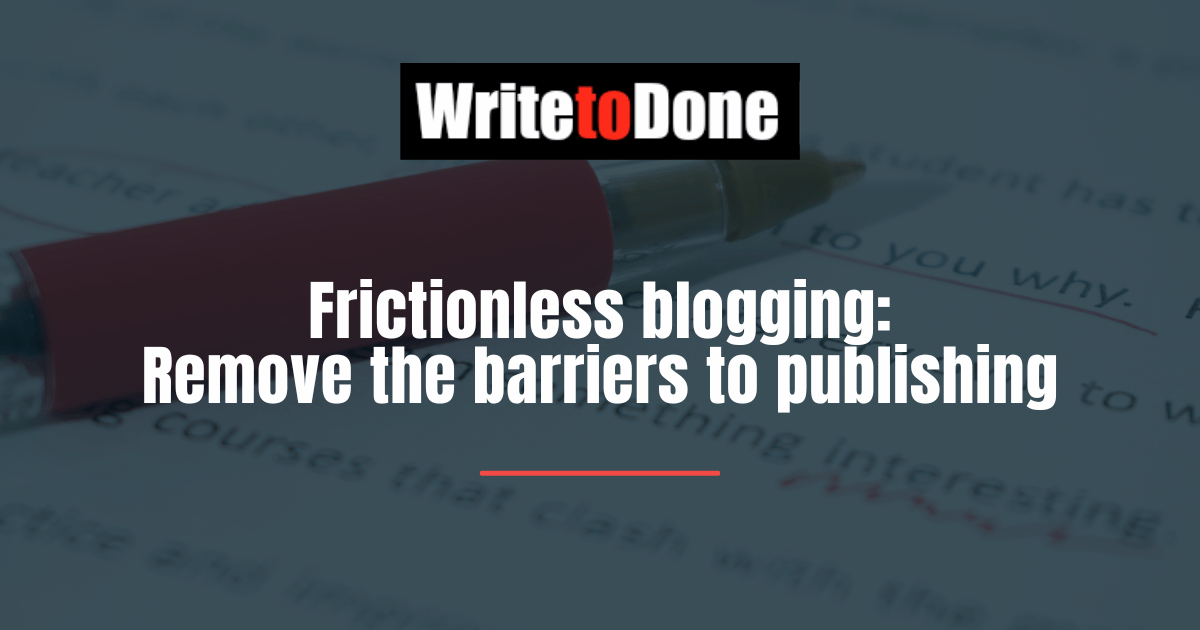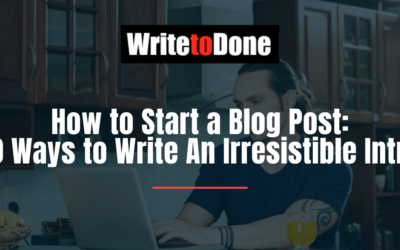Photo courtesy of mezone.
By Leo Babauta
There was a time when I would agonize over writing a post, get it perfect, and basically spend hours on it (if not days) before publishing.
Perfect is the enemy of a good blogger.
These days, I post to four different blogs without it taking large chunks of my life away: Zen Habits, Write To Done, mnmlist.com and now Zen Family Habits. If I allowed perfection and a million other obstacles to get in my way, I’d never be able to get my ideas out there.
Having the ideas isn’t the problem — I have a million of them. What I’ve learned is “frictionless blogging”: removing all the barriers to publishing so that I get those ideas out into the world as easily as possible.
What are the barriers to blogging? Think about it in your own life — what slows you down? Fear of sounding dumb? Distractions? Fiddling with your blog software, stats, widgets? Formatting a post perfectly? Getting every single word right? Finding the perfect photo? Writing the perfect headline?
These and many other things create friction, and the more friction there is, the less you can publish. Now, we should ask the question: is it desirable to publish quickly and often? Not always.
I am a fan of slow living, and a minimalist, so you’d think frictionless blogging and being prolific would be against my nature. And it is, to the extent that I don’t like a chaotic, complicated, frenetic, overly speedy lifestyle. But if you can remove distractions, enjoy the act of writing, and then publish in as simple a way possible, that’s a good thing.
You don’t need to be prolific or speedy. I am, as a blogger, only because I love putting my ideas out there — to be used, to be criticized, to be turned into something new and better, or to slowly fade away into the void because no one cared. All of those are better than my ideas languishing in my head, never to surface into the world.
So I publish, without friction. And it works. I can blog a lot, easily, and still have time for other projects (A-List Blogging, a fitness course I’m creating, ebooks, and other fun stuff).
So if you’re interested in frictionless blogging, here are a few tips:
- Write in text or Textile or Markdown. Ignore formatting when you write. Don’t even worry about links or photos. Just write. Text is perfect for this, but lately I’ve also been using Textile because it’s still fast but it saves time later. Markdown is also a good choice. With all three, you’re just writing text, and not worrying about complicated formatting.
- Use a simple tool. WordPress and other blogging software are great, but for writing, they’re overkill. And they contain distractions, like going to look at comments or stats or plugins or widgets or your theme. Forget about all that. Just focus on the writing, by using a simple tool. The simplest is a text editor with no bells or whistles. I use TextEdit on the Mac, and used Notepad when I was on a PC.
- Eliminate distractions. When you’re writing, turn off the Internet and close your browser and all other programs. Seriously. You don’t need them to write — if you need some research or a quote, do that first, then copy and paste into your text editor. Clear everything else away, and just write. Focus will improve your writing and remove a lot of friction.
- Forget perfectionism. This is the biggest roadblock for many bloggers. I’ve talked to newer bloggers who will spend days crafting a post, but the result is they post infrequently. Let go of the need to get it perfect. Instead, focus on getting it out. You can improve it later (see the next tip). If you find yourself trying to be perfect, imagine that I’m sitting next to you, about to punch you for being a perfectionist. Let go of this need, and the imaginary Leo now gives you a big smile, and leaves to go write a post.
- Publish quickly, then fix. This is a bit unconventional and may not work for everyone, but it works for me. Often I will paste the text of a post into the WordPress editor, format a couple of sub-headlines in bold, write a quick headline, and then publish — without putting in links, without editing or proof-reading. Then I’ll post it to Twitter, and know that I will get some readers very quickly. Finally, I’ll go and add in the links, proof-read, make some edits. The reason for doing it backwards like this is that 1) I’ve gotten the post out there, as frictionless as possible, and 2) it gives me a little incentive to work quickly to get things right, as I know people are already coming to read the post. It’s a weird method, but again, it forces me to be fast and frictionless.
- Pick the first photo that works. I like to have a nice image to go with my posts. It adds a nice visual element, draws the reader’s eye, sets the mood for the post. But I can spend a LONG time looking for a good photo. So lately, I just pick the first one I can find that fits my standards — not the best one.
- Format simply. Some bloggers put in a lot of bolds and italics and other more fancy formatting. I try to avoid overdoing that stuff. I use bold to highlight certain items and sub-headlines, but that’s mostly it.
- Write a good headline. OK, this is one thing you should do well, because you shouldn’t change headlines after you publish (it’s confusing). And a headline is important. That said, don’t agonize or take too long. You’ll get better at this as you go, especially if you look at how the best headline writers do it, but for now, just write the best one you can within a minute or two. List a few different versions, quickly, and pick one. Then be done with it.
- Fear of sounding dumb. This is a real fear, but you can’t let it stop you. We all sound dumb sometimes (or a lot of times, in my case) — it’s unavoidable. But you have to put yourself out there, or you’ll never interact with others on topics you care about, you’ll never get better, you’ll never get anywhere. Sound dumb, and have fun doing it.
Time to publish this post, from first word written to pressing “publish”: 25 minutes.

















